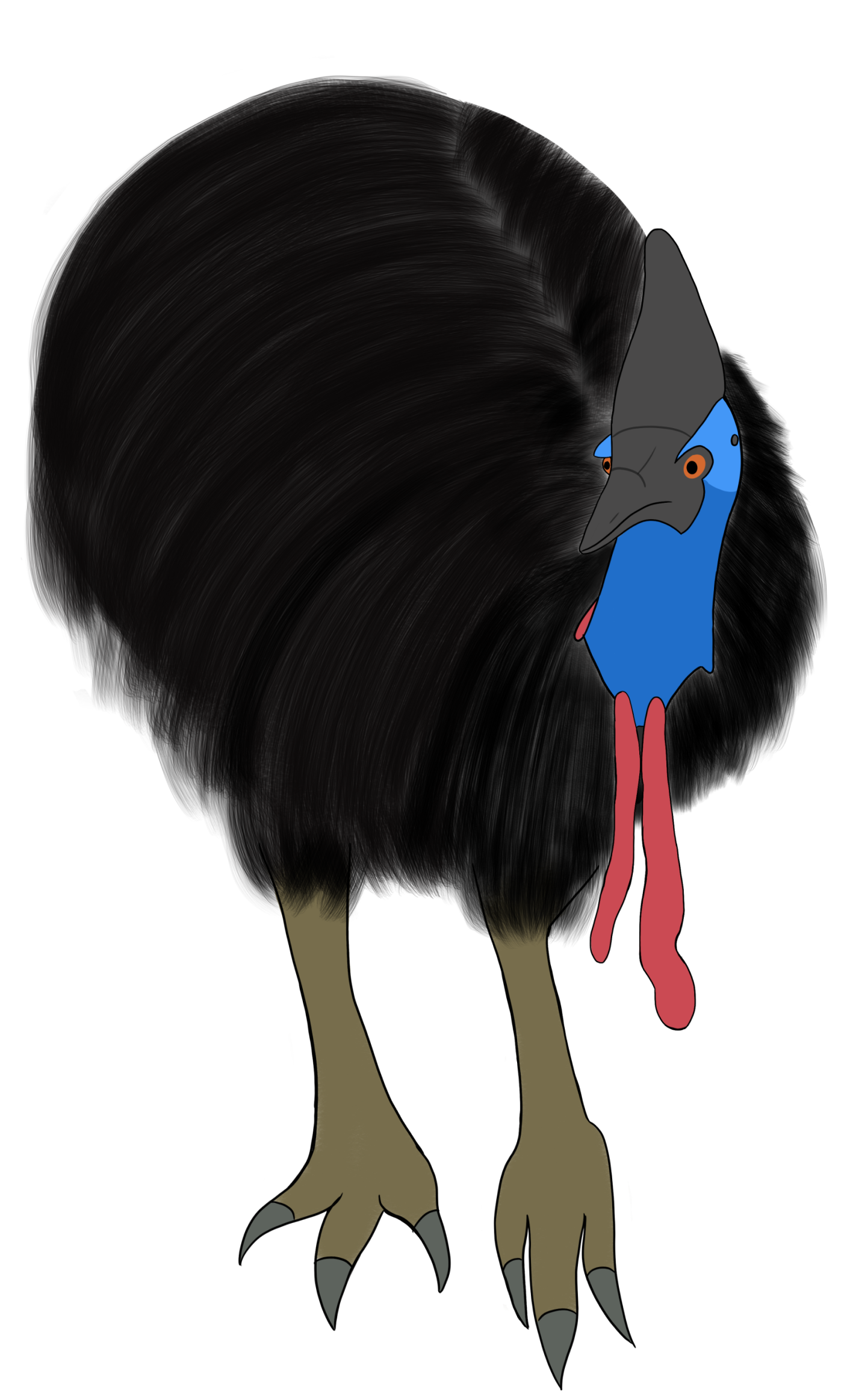Southern Cassowary
Southern Cassowary
Scientific name: Casuarius casuarius
Conservation Status: Vulnerable – Endangered
Introduction
The Southern Cassowary is a large flightless bird that is found North Queensland Rainforests. They have a large greyish coloured casque and a red wattle that hangs from their neck. They have distinctive blue skin with red skin on the back of the neck and feathers that look hair like. They can grow up to be two metres tall with the female often being the taller gender and also the dominant of the two. They also sport a large claw on each foot that is used for defence against predators.
Range/Habitat
Southern Cassowaries can be found in the Rainforests of North Queensland Australia, they can also be found in New Guinea and Eastern Indonesia. They are a reclusive animal that live in the dense rainforests often alone. They will usually inhabit the same small area but sometimes with go near houses and other areas that humans live in, in search of food. They have a spatial memory that allows them to remember where food and water sources are within their home range that they then use when raising their chicks. Around 89% of their essential habitat is under the “protected” status due to large amounts of land clearing.
Behaviour and Diet
The Southern Cassowary is a solitary animal that is territorial. Males often inhabit a smaller area than the females which often has a home range that overlaps multiple male home ranges for the purpose of finding a mate. The mature Southern Cassowaries typically only meet to mate otherwise fights over territory occur. The male Southern Cassowary is the one who incubates the eggs then guards and raises them, then once they are considered old enough, he will chase them away so they can start their own lives. Attacks on humans have been recorded during mating season from males who are defending their chicks.
The Diet of a Southern Cassowary consists mostly of fallen fruit, carrion, small vertebrates, invertebrates and fungi, some of which that is too poisonous for other species to digest. They are considered frugivores and will often swallow the fallen fruit whole and pass the seeds completely unharmed. In dung samples they have found there to be over 238 species of plant in the diet of a Southern Cassowary!
Conservation Status and Possible Threats
The conservation status of the Southern Cassowary is from Vulnerable to Endangered. Under the Commonwealth Environment Protection and Biodiversity Conservation Act 1999 they are listed as Endangered and under the Queensland Nature Conservation Act 1992 for the Wet Tropics region they are listed as Endangered but in the Cape York region they are listed as Vulnerable.
The possible threats for Southern Cassowaries are:
- Habitat loss from land clearing
- Natural catastrophic events such as Tropical Cyclones
- Fragmentation of habitat due to land clearing
- Dog attacks and human attacks
- Vehicles in developed areas
- Hand feeding (this creates a sense of safety and reliance around humans for food)
- Diseases
- Degradation of habitat from invasive weeds or fires
- Wild Pigs (They compete for food and control measures can be dangerous to Cassowaries if dogs are let loose for hunting)
Recovery plan/actions
There is a long-term recovery plan in place to improve the protection and enhance of their habitat. Mapping and identification of essential habitat, nurseries to help revegetate the habitat and create corridors between fragmented habitats. Rescues and rehabilitation centers have been established to help bring injured cassowaries back to good health for release back into their habitat. Community conservation efforts and events to bring awareness to the species and the importance of preserving their essential habitats. Allowing land owners to apply to have their land considered as a nature refuge or protected land area if it meets the requirements.
Bibliography
Private Protected Area Program, Last updated: 5 April 2022, The Private Protected Area Program, https://www.qld.gov.au/environment/parks/protected-areas/private/program
Queensland Government Environmental Protection Agency, 2007, Recovery plan for the southern cassowary (Casuarius casuarius johnsonii), https://www.awe.gov.au/environment/biodiversity/threatened/recovery-plans/recovery-plan-southern-cassowary-casuarius-casuarius-johnsonii
Queensland Government, Last updated: 11 November 2020, Southern Cassowary, https://www.qld.gov.au/environment/plants-animals/conservation/threatened-wildlife/threatened-species/featured-projects/southern-cassowary
Australian Museum, Last updated: 11/12/20, Southern Cassowary, https://australian.museum/learn/animals/birds/southern-cassowary/
Submitted By Rayne
for Jungle Expedition: Report
Submitted: 3 years ago ・
Last Updated: 3 years ago
